Last-Minute NYC Holiday Gift Guide 🎁
We’ve created a holiday gift guide with presents for the intrepid New Yorker that should arrive just in time—


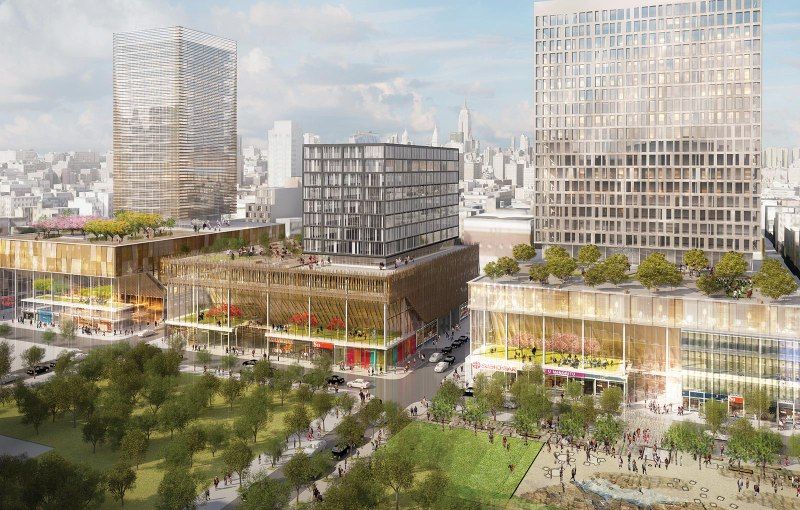
Essex Crossing Rendering by Taconic Investment Partners
New York City is famous for breaking real estate records, for most expensive of course. In a city known for $100+ million apartments, deals into the billions, and parking spaces that go for $1 million, it can be easy to forget that there’s also a tradition of selling property for $1 dollar. This token transaction amount is often used a development incentive and potential buyers need to show they have plans and the funds to execute. The $1 deals happen at several levels –between federal and city/state, between federal and private citizens, between city and private developers, between city and non-profit organizations. New York City’s Department of Housing Preservation and Development sold 700 buildings for $1 between 2002 and 2006 alone, though the pace has decreased considerably since then as the city’s own stock of ownership has declined.
Many of these locations may truly surprise you, as they have since become embedded into the urban fabric seamlessly.
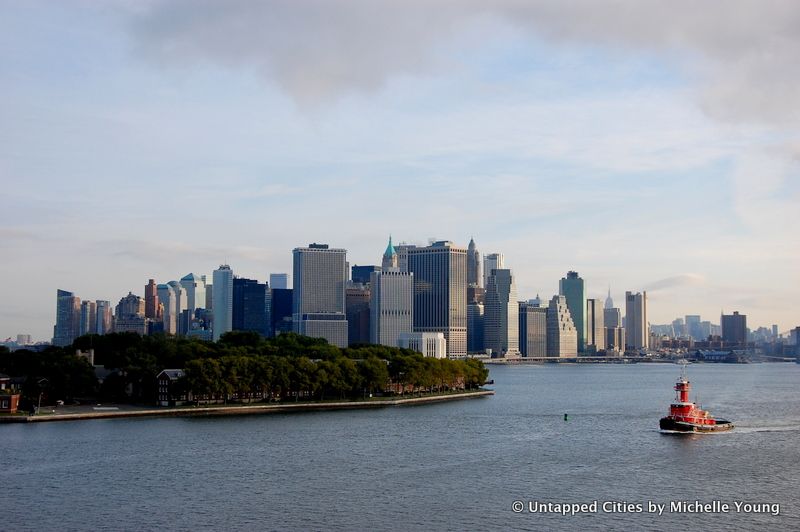
In 2001, 22 acres of Governors Island, formerly an Army Base and a Coast Guard site, was declared a national monument by President Bill Clinton. In 2002, it was announced that the remainder of the island, about 150 acres, would be sold to the people of New York. In 2003, this transaction took place for $1. A not-for-profit organization, The Trust for Governors Island was created by the City of New York to plan, redevelop and maintain this part of Governors Island. The island has been open to the public since 2010 and there are plans to make it a year-round destination.
 Rendering of Landmark Colony by Vengoechea+ Boyland
Rendering of Landmark Colony by Vengoechea+ Boyland
The Staten Island Farm Colony, originally the Richmond County Poor Farm, provided room and board to indigent populations in exchange for their labor. The site has been vacant since 1975, but the NYCEDC has been working on a redevelopment project for the site. In January 2016, the property was sold for $1 to a Staten Island developer, NFC Associates and to come will be Landmark Colony, a mixed-use development with age-restricted senior housing, affordable housing, and public space.
See photos of the Farm Colony in its current abandoned state and the plans for its future.
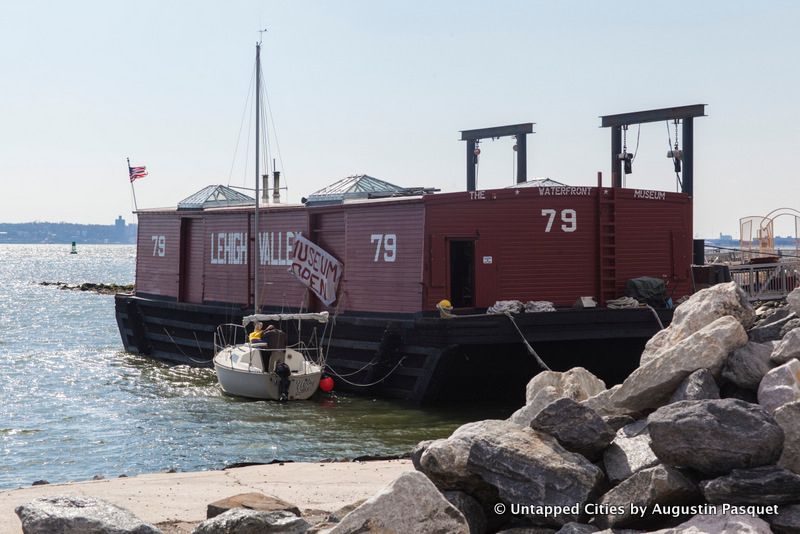
Currently situated in Red Hook, the Waterfront Museum & Showboat Barge is located in the Lehigh Valley Barge No. 79, built in 1914. The barge was acquired by David Sharps, a former circus performer, for $1 whereupon he rescued it from the mud flats near the George Washington Bridge. Today, it’s the only barge of its kind still on the water and listed on the National Register of Historic Places. Sharps has lived in the cabins down below since 1994, and uses the space as a museum and performance space.
East Village art and activism space ABC No Rio purchased its building from the city of New York’s department of Housing Preservation and Development for $1, after the organization raised the necessary funds and making plans to renovate the building. The graffiti-covered tenement building is going to be replaced by a new energy efficient, Passive House design, though the project is still in the works.
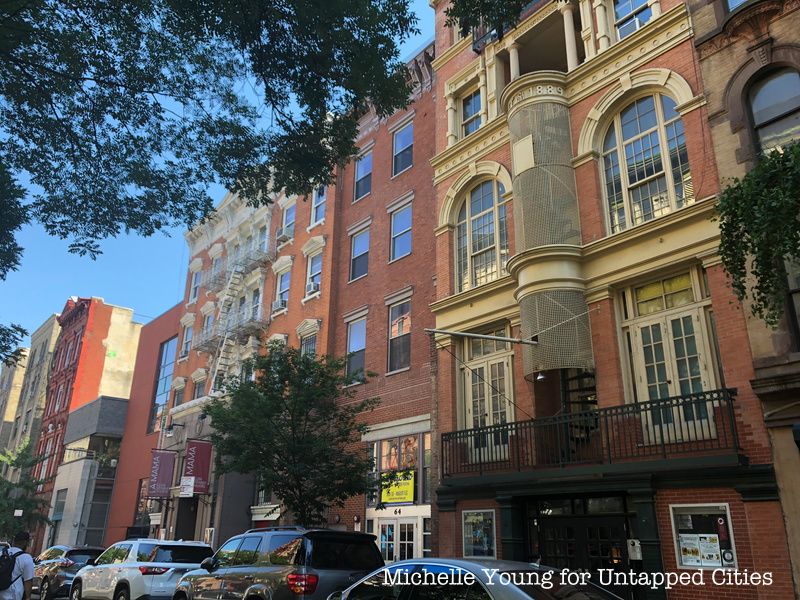
Similar to ABC No Rio, Fourth Street Arts Block also purchased six buildings and two plots of land each for $1 in January 2006 at 59-72 East 4th Street in the East Village. The Observer noted that sales to groups were much less prevalent than those to developers, making ABC No Rio and Fourth Street Arts Block unique cases. The Fourth Arts Block has become one of the only two recognized cultural districts in New York City, which means that all the properties within are restricted to arts uses in perpetuity.
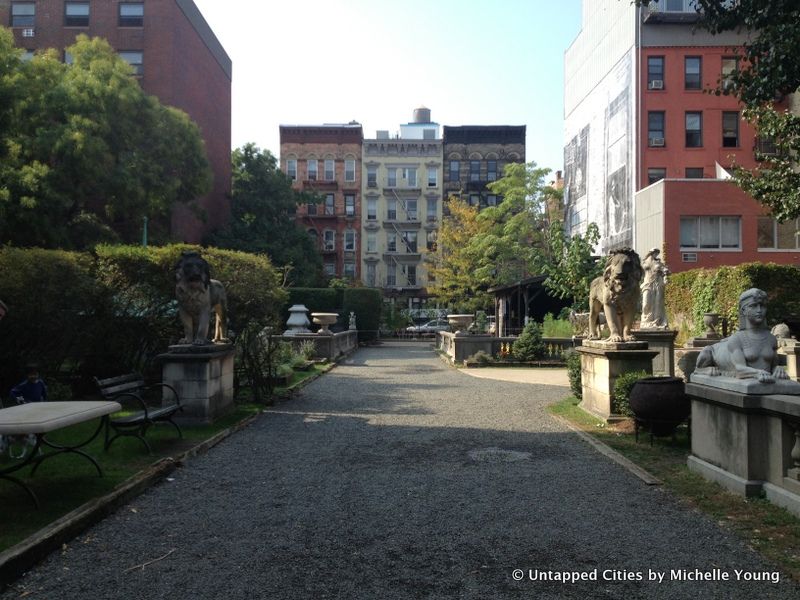
The Elizabeth Street Garden
While this example doesn’t constitute a sale, the history of community gardens began in the late 1970s with token leases for as little as $1 per year (or sometimes $1 per month) between the city and neighborhood groups to revitalize vacant parcels. The fate of these parcels have become particularly contentious in recent years with increased pressure to provide affordable housing. The city has attempted, in some cases, to take back these sites that have become important community locations over the last several decades. Organizations, such as the New York Restoration Project, have purchased some of the community gardens outright to keep the lots as public amenities.
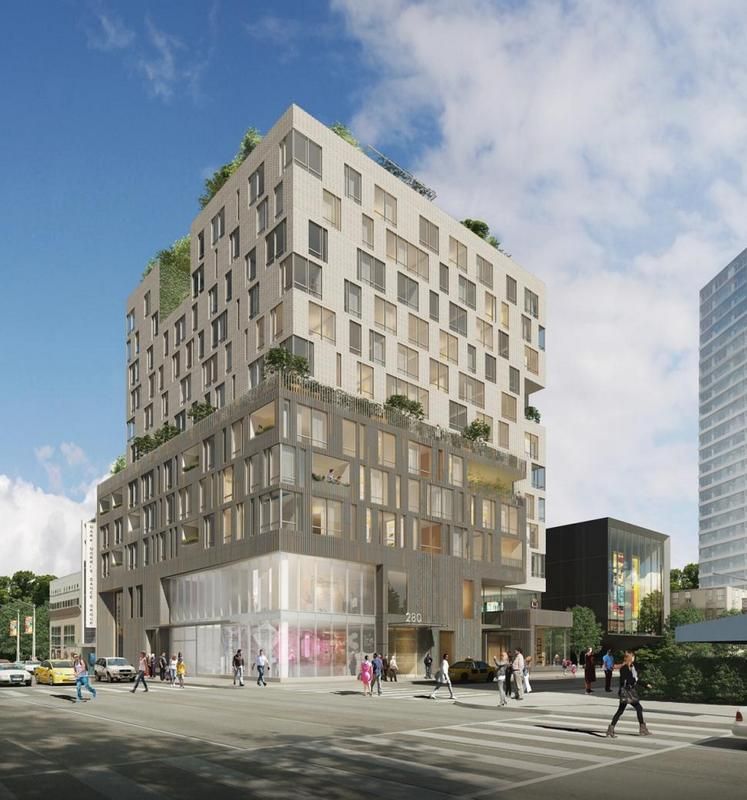
Rendering by Jonathan Rose Companies
This prime lot in downtown Brooklyn was also part of New York City’s Department of Housing Preservation and Development portfolio. This deal for a 12-story building of both affordable and market rate housing was negotiated under the Bloomberg administration but was completed in the spring of 2015. The building is rising today just next to BAM, developed by Jonathan Rose Companies.

Rendering by Taconic Investment Partners
Essex Crossing is a large 1.65-million-square-foot development that will encompass the Seward Park Urban Renewal Area (SPURA) on land demolished as part of urban renewal plans in the 1960s. The area then sat empty as parking lots for the next five decades. The controversy behind the clearing is a story (and lawsuit) in itself, but the new development consists of nine sites. Of the 1000 units of housing in Essex Crossing, 500 will be affordable.
To incentivize the construction, certain sites were offered by the Department of Housing Preservation and Development at $1. The first phase of the construction will be completed by 2018, another phase in 2021 and the final buildings in 2022 and 2024.
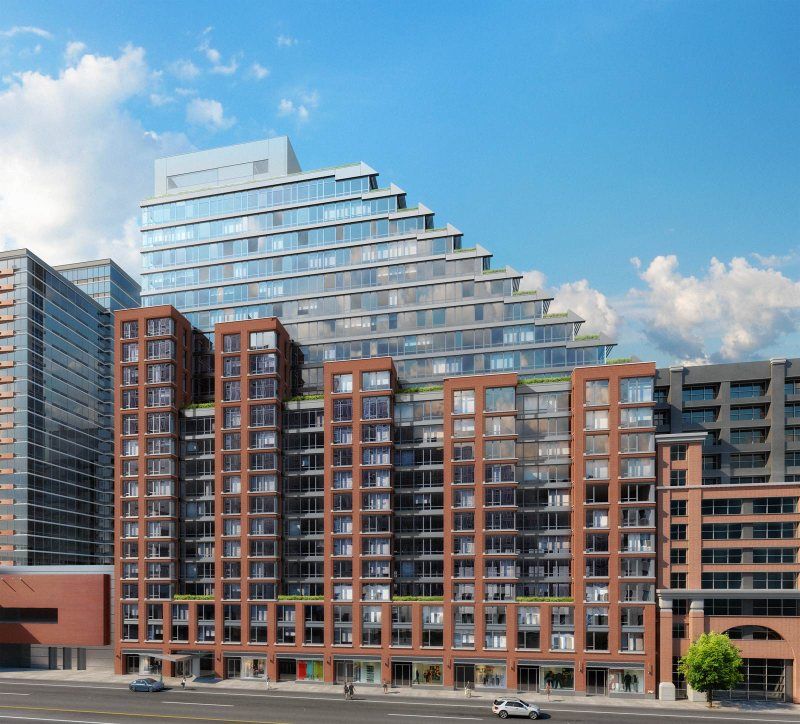
Image via Taconic Investment Partners
In 2014-2015, a large lot on West 53rd Street between 10th and 11th Avenue was sold to Clinton Housing Development Corporation, a non-profit, for $1. The plot of land, as The Commercial Observer reported at the time, had a value of $110.6 million. The corporation would build 103 units of affordable housing, and sell part of the parcel to Taconic Investment Partners who would include 81 affordable units in a new building on 52nd Street. Like Essex Crossing, renewal efforts here began in the late 1960s but only in recent years has there been much traction to build on the cleared out land.
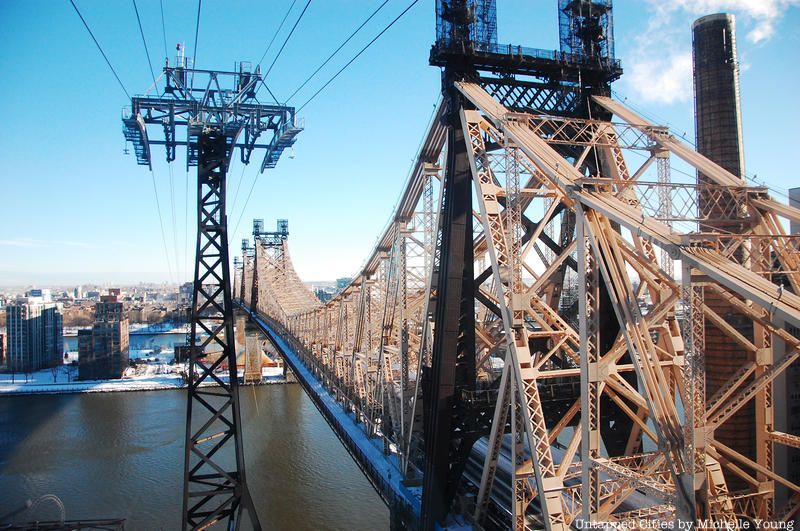
Also in 2014, the city offered air rights it owned from parcels of land underneath the Queensboro Bridge on and off ramps as incentives for affordable housing. Instead of $1, these air development rights would actually be transferred for free to the developer who could come up “an affordable housing program that maximizes both the number of housing units and the level of affordability,” the NYCEDC Request for Proposals stated. There was also possibility to purchase the air rights outright, if developers did not want to create affordable housing. The air rights, as per city law, would have to be used on adjacent parcels of land, or nearby through a pass-through lot. There hasn’t been an update on this proposal since it was announced however and the RFP is no longer available on the NYCEDC website.
Next, check out 10 of Manhattan’s smallest parks and NYC’s superlatives from tallest building and more.
Subscribe to our newsletter